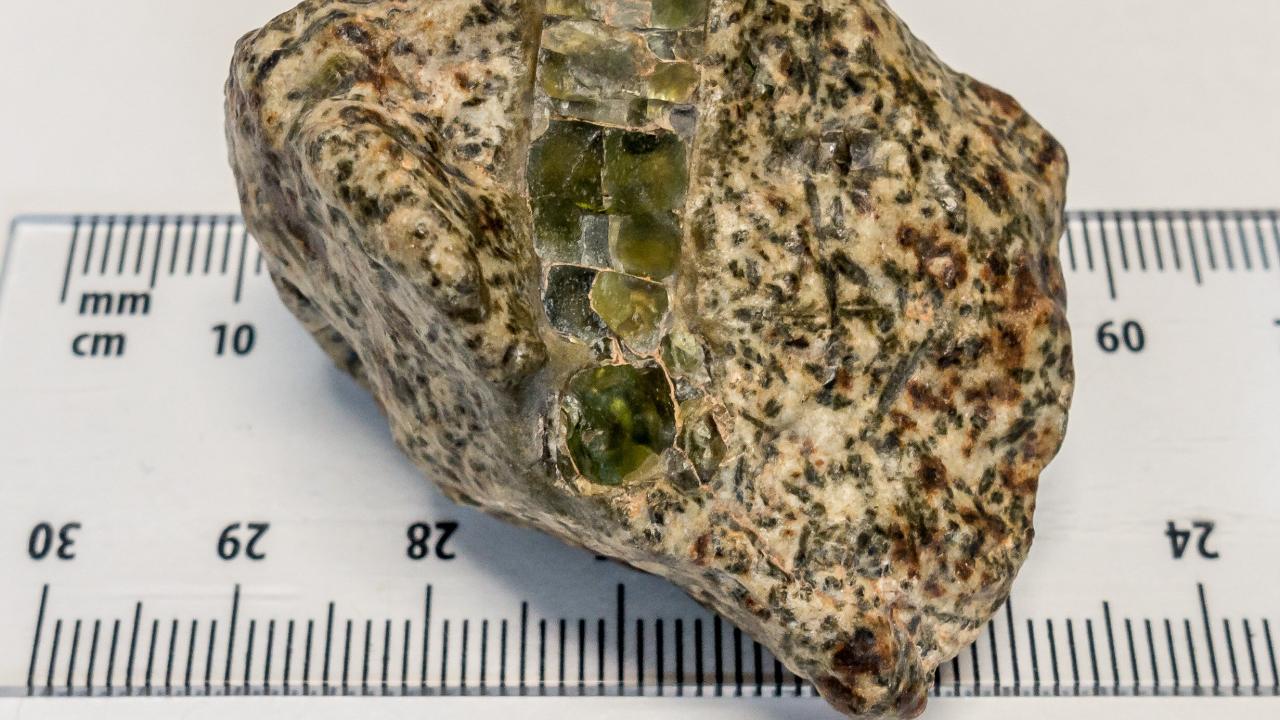A little over four and a half billion years ago, dust circling our young sun was collecting into balls that would become planets. Heat from radioactive decay melted these balls of dust into blobs of molten rock, growing as they accumulated more material. A small piece of one of these molten objects broke away and traveled around the solar system for eons before falling to Earth as a meteorite in the Algerian desert. Now, very accurate dating of this meteorite is giving new insight into the formation of the Solar System. The work, by an international team including Professor Qingzhu Yin and colleagues at the UC Davis Department of Earth and Planetary Science and collaborators at Australian National University, was published Aug. 29 in Nature Communications.
Radioactive decay, especially of the isotope aluminum-26, is thought to have provided the heat to turn the early planets into balls of molten rock that eventually cooled to form Mercury, Venus, Earth and its moon, and Mars. Understanding where and when aluminum-26 was distributed in the early solar system is therefore important for understanding how planets formed. The new study shows that, contrary to previous theories, aluminum-26 was not evenly distributed in the protoplanetary disk.
Meteorites come from many sources. Some broke away relatively recently from existing bodies such as Mars or the dwarf planet Vesta. Others are fragments of early planets or represent leftover material which never made it into a larger body.
Ages from isotopes
Yin’s laboratory at UC Davis carries out highly precise measurements of isotopes from meteorites, determining their age and composition.
Aluminum-26 decays to stable magnesium-26 with a half-life of 705,000 years, so any traces of aluminum-26 are long gone from meteorites that are over four and a half billion years old. But the ratio of magnesium-26 to other isotopes of aluminum and magnesium tells us how much was originally present.
Yin’s lab can also measure the age of a meteorite using lead isotopes, which are formed by radioactive decay of uranium.
Using the lead/uranium method, Yin’s team dated a meteorite called Erg Chech 002 to 4,565,560,000 years old, give or take 120,000 years, one of the most accurate age estimates ever made for an extraterrestrial object. Erg Chech 002 was collected in Algeria in 2020 and is a type of meteorite derived from the molten material of a forming planet.
The team were also able to measure how much aluminum-26 would have been in Erg Chech 002 when it formed. They found that it would have contained more of the planet-melting isotope than other accurately dated, similar meteorites of the same age.
The results show that aluminum-26 was not evenly distributed through the early solar system, as had previously been assumed since the discovery of aluminum-26 a half century ago. The additional aluminum-26 could have come from supernovae that exploded and showered material into the early Solar System.
Coauthors on the study are: at UC Davis, Paige Cary, Magdalena H. Huyskens, Audrey Miller and Supratim Dey; Evgenii Krestianinov and Yuri Amelin, Australian National University, Canberra; Yuki Hibiya, University of Tokyo; Haolan Tang and Edward D. Young, UCLA; Andreas Pack and Tommaso Di Rocco, Georg-August-Universität Göttingen, Germany. The work was supported by a grant from the Australian Research Council on which Amelin was a chief investigator and Yin was a participating investigator. Participating Investigator.
Media Resources
Igneous meteorites suggest Aluminium-26 heterogeneity in the early Solar Nebula (Nature Communications)
Sahara space rock 4.5 billion years old upends assumptions about the early Solar System (The Conversation)
